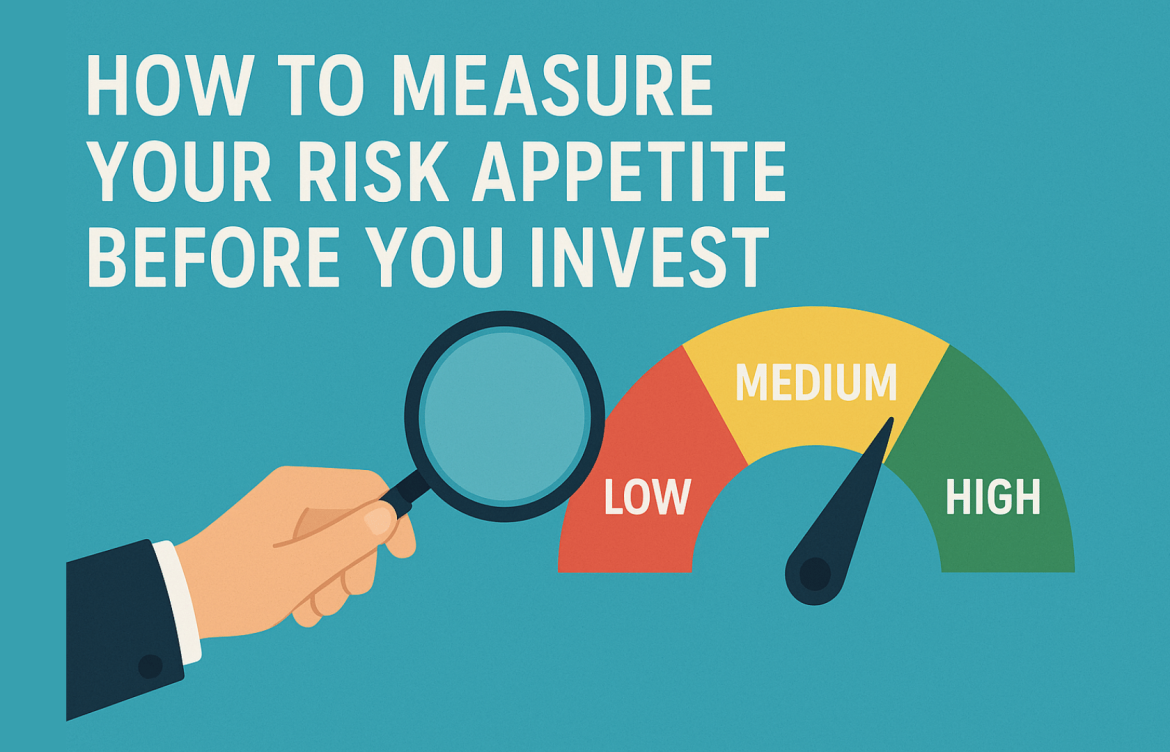
How to Measure Your Risk Appetite Before You Invest
How to Measure Your Risk Appetite Before You Invest
Before investing in mutual funds, stocks, or any financial instrument, one key factor often ignored is risk appetite—your ability and willingness to take risks with your capital. While investment products offer varied returns, they also carry different levels of risk. Understanding how much risk you’re comfortable with is foundational to building a portfolio that you can stick with, even during volatile times.
Thank you for reading this post, don't forget to subscribe!In this blog, we’ll explain what risk appetite means, how it differs from risk tolerance and capacity, and how you can accurately assess it to make smarter investment decisions.
What Is Risk Appetite?
Risk appetite refers to the amount of risk you are willing to take in pursuit of investment returns. It’s personal and varies based on:
- Your financial goals
- Investment timeline
- Age and income
- Emotional comfort with market fluctuations
It’s important not to confuse it with:
- Risk tolerance: Your emotional and psychological response to risk.
- Risk capacity: Your financial ability to absorb losses without impacting your lifestyle.
All three matter, but risk appetite is the lens through which you interpret them.
Why Knowing Your Risk Appetite Matters
- Aligns Portfolio With Goals: If you’re saving for a long-term goal like retirement, a higher equity exposure may be justified.
- Avoids Panic Selling: Investors who understand their risk appetite are less likely to make emotional decisions during market dips.
- Improves Returns Consistency: A well-aligned risk profile helps you stay invested, improving long-term outcomes.
Key Factors That Define Risk Appetite
- Age
- Younger investors typically have a longer time horizon, allowing them to recover from market downturns.
- Older investors may prioritize capital preservation.
- Income Stability
- Stable income = higher risk-taking ability
- Freelancers or self-employed individuals may need more liquidity and lower-risk products
- Financial Goals
- Short-term goals = lower risk exposure (e.g., debt funds, liquid funds)
- Long-term goals = can afford more volatility (e.g., equities, hybrid funds)
- Past Investment Experience
- Seasoned investors may handle equity corrections better than first-timers.
- Behavioral Tendencies
- Are you likely to check your portfolio daily?
- Do market crashes make you anxious?
Real-World Examples of Risk Levels
To make risk more relatable, let’s compare a few popular investment activities by risk profile with real-world-style examples.
Intraday Option Trading – HIGH RISK (Speculative)
Meet Karan, a 28-year-old working in fintech. He watches markets daily and places bets on Nifty options. On a volatile day, he buys a call option at ₹50. Within an hour, it’s down to ₹30. Panic kicks in. He exits at a loss. But if he had waited 30 minutes more, it spiked to ₹80.
Option trading involves time decay, leverage, and massive volatility. One trade can wipe out a chunk of capital.
Only suitable for highly risk-tolerant, experienced traders who can afford quick losses.
Intraday Equity Trading – HIGH-MEDIUM RISK
Aarti, a 33-year-old analyst, trades Infosys intraday. She spots patterns and aims for small profits (₹1-2 per share). While safer than options, it’s still risky. News flow, market swings, or technical glitches can cause losses.
Requires discipline, stop-loss orders, and no emotional trading.
Equity Investing – MEDIUM-HIGH RISK (Growth-Oriented)
Raj, 40, buys quality large-cap stocks and holds them long-term (e.g., HDFC Bank, TCS). His portfolio sees dips but also long-term growth.
Good for long-term wealth creation if you can handle short-term volatility.
Mutual Fund Investing – MODERATE RISK
Neha, 35, invests in equity mutual funds via SIPs. Her money is diversified across sectors and managed by professionals. She’s insulated from daily volatility and doesn’t need to monitor markets.
Ideal for those with medium risk appetite and long-term goals.
Debt Mutual Funds / FDs – LOW RISK
Siddharth, 60, keeps funds in ultra-short debt funds and fixed deposits. Returns are stable, and he prioritizes safety.
Great for low risk-takers, retirees, and short-term needs.
How to Measure Your Risk Appetite
1. Take a Risk Profiling Questionnaire
Many AMCs and advisors provide standardized tools that ask questions like:
- What will you do if your investment falls by 20% in a month?
- How long do you plan to stay invested?
- What’s your backup plan in case of job loss?
These help categorize you as:
- Conservative: Low-risk, prefer debt instruments
- Moderate: Balanced approach, open to hybrid funds
- Aggressive: High-risk tolerance, favor equity-heavy portfolios
2. Assess Risk Capacity
This is the financial side:
- Emergency corpus in place?
- Any existing debts?
- Dependents relying on your income?
Use budgeting tools or speak to a financial planner for an accurate picture.
3. Stress-Test Your Portfolio
Try a simulated market drop and assess how your portfolio—and you—respond. If you can’t sleep at night during a 15% notional loss, your current exposure may be too aggressive.
Tips to Match Portfolio With Risk Profile
- Conservative? Stick to debt funds, FDs, and large-cap mutual funds.
- Moderate? Add balanced advantage funds, large & mid-cap equity funds.
- Aggressive? Explore small-cap funds, sectoral funds, or direct equity (if you understand them well).
Conclusion
Your risk appetite is not static—it evolves with your age, experience, financial situation, and market cycles. Periodically revisiting it ensures your portfolio continues to align with your goals and comfort.
Before choosing any investment, ask yourself: Can I handle short-term volatility for potential long-term gains? If the answer aligns with your strategy, you’re on the right path.
Need Help Assessing Your Risk Profile?
At Goodwill Wealth Management, we offer personalized risk profiling and goal-based investment planning.
Contact us and we’ll help you invest with confidence—and clarity.

